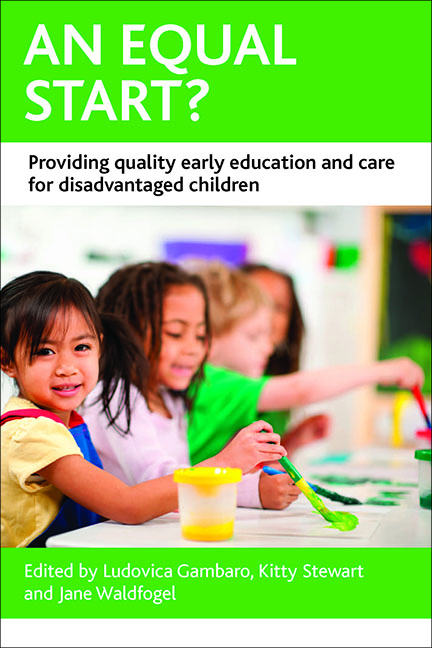Book contents
- Frontmatter
- Contents
- List of figures, tables and appendices
- Acknowledgements
- Notes on contributors
- one Introduction
- two Equal access to early childhood education and care? The case of the UK
- three Towards universal quality early childhood education and care: The Norwegian model
- four Equal access to quality care: Lessons from France on providing high-quality and affordable early childhood education and care
- five Equal access to high-quality childcare in the Netherlands
- six Access and quality issues in early childhood education and care: The case of Germany
- seven New Zealand: A narrative of shifting policy directions for early childhood education and care
- eight Early education and care in Australia: Equity in a mixed market-based system?
- nine Delivering high-quality early childhood education and care to low-income children: How well is the US doing?
- ten Common challenges, lessons for policy
- Index
seven - New Zealand: A narrative of shifting policy directions for early childhood education and care
Published online by Cambridge University Press: 03 February 2022
- Frontmatter
- Contents
- List of figures, tables and appendices
- Acknowledgements
- Notes on contributors
- one Introduction
- two Equal access to early childhood education and care? The case of the UK
- three Towards universal quality early childhood education and care: The Norwegian model
- four Equal access to quality care: Lessons from France on providing high-quality and affordable early childhood education and care
- five Equal access to high-quality childcare in the Netherlands
- six Access and quality issues in early childhood education and care: The case of Germany
- seven New Zealand: A narrative of shifting policy directions for early childhood education and care
- eight Early education and care in Australia: Equity in a mixed market-based system?
- nine Delivering high-quality early childhood education and care to low-income children: How well is the US doing?
- ten Common challenges, lessons for policy
- Index
Summary
Introduction
Between 1999 and 2008 the centre-left Labour government in New Zealand made radical changes to the provision of early childhood education and care (ECEC). The government introduced funding to support participation in ‘high need’ centres and services, delivered on a policy of 20 hours’ free early childhood education (ECE) per week for three and four-year olds, increased universal subsidies including for children under three and was on target by 2012 to have teacherled ECEC centres staffed entirely by qualified teachers. These policies were embedded in the Labour government's Strategic Plan, Pathways to the Future – Ngã Huarahi Arataki 2002–2012, intended to provide a robust infrastructure for delivering high-quality, affordable, ECEC participation by all children (Ministry of Education, 2002).
The scope of New Zealand's ECEC policy directions attracted international attention. Peter Moss described New Zealand as ‘leading the wave’ of early childhood innovation, having ‘confronted the wicked issues’ with the development of an integrated approach to funding, regulation, curriculum and qualifications (Moss, 2007, p 33). Moss pointed to New Zealand's vision of early childhood education as ‘a broad and holistic concept that covers, children, families and communities, a concept of “education-in-its-broadest-sense” in which learning and care really are inseparable and connected to many other purposes besides’ (2008, pp 7–8). In New Zealand, political commentator Colin James argued that investment in early childhood education may be the most memorable achievement of Labour's period in office: ‘Making early childhood systematic … takes us deep into a zone of policy debate: on citizens’ access to participation in our economy and society…. Early childhood education is investing in infrastructure, just like building roads. It is arguably Labour's most important initiative, its biggest idea’ (Otago Daily Times, 19 February 2008).
However, the election of a centre-right government in November 2008 caused a shift in policy direction. Retrenchment was immediate after the election, with the 2010 Budget signalling the changes ahead. Research, training grants and professional development programmes were culled. Labour's target of 100% qualified teachers in ECEC by 2012 was cut to 80%. Instead, new initiatives were announced to improve ECEC participation in ‘high need’ locations with large populations of indigenous Ma¯ori children, or Pasfika children whose families had migrated over several decades from Pacific Island nations. The government argued that previous policies had failed to redress low ECEC participation for these children that in some localities had fallen as low as 59% (Morrison, 2009).
- Type
- Chapter
- Information
- An Equal Start?Providing Quality Early Education and Care for Disadvantaged Children, pp. 147 - 170Publisher: Bristol University PressPrint publication year: 2014
- 2
- Cited by

